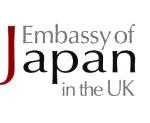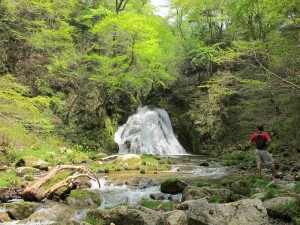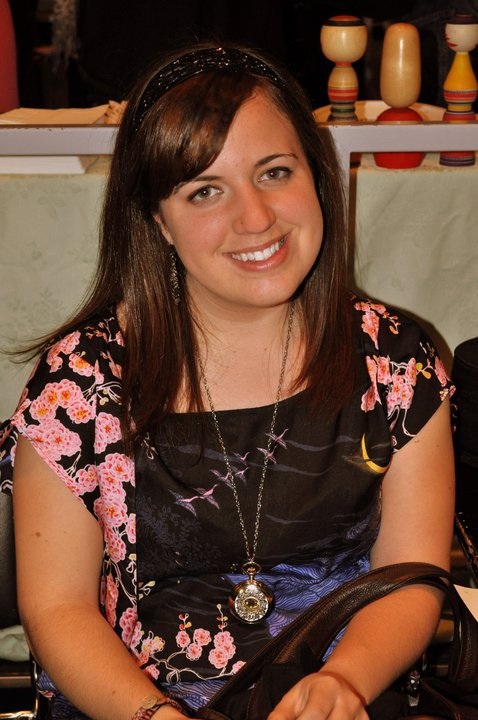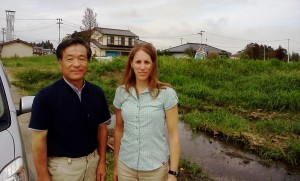Foundation Center interview with JET alum James Gannon on Rebuilding After the Great Tohoku Earthquake
*******************
The below interview appeared in PhilanTopic, the Philanthropy News & Digest blog which is part of The Foundation Center. It’s a really terrific explanation of the situation in Japan from a philanthropy/fundraising/non-profit perspective by Jim Gannon (Ehime-ken, 1992-94), Executive Director of the Japan Center for International Exchange (JCIE/USA), who has become one of the experts in this field.
March 09, 2012
One Year Later: Rebuilding After the Great Tōhoku Earthquake
James Gannon is executive director of the Japan Center for International Exchange/USA, which works to strengthen U.S.-Japan cooperation across a range of fields. Recently, Laura Cronin, a regular contributor to PhilanTopic, spoke with Gannon about the progress of rebuilding efforts in the quake- and tsunami-affected Tohoku region of the country.
Philanthropy News Digest: The earthquake and tsunami affected a four hundred-mile region along the northeastern coast of Japan — an area roughly comparable to the BosWash corridor in the United States. What are conditions in the region like now, a year later? And how have people in the affected region, and the country at large, been changed as a result of the disaster?
James Gannon: Even now, some communities are still disposing of rubble, while things appear almost normal in other, less-hard-hit areas. Compared to the scenes of utter devastation we saw a year ago, there has been extraordinary progress. But if you spend any time in these communities, you realize the depth of the wounds. More than three hundred thousand people are still without homes, and that is weakening traditional community ties. Many of the jobs in the fishing industry, agriculture, and small business have not returned, resulting in high unemployment and all the social problems it brings.
Meanwhile, women who lost family members, men who are ashamed that they can no longer support their families, and children traumatized by the disaster are grappling with mental health issues. The stoicism of the people in the Tōhoku region is stunning — even by Japanese standards — but most acknowledge that the road to recovery will be long.
On the other hand,
CLICK HERE to read the full interview on the PhilanTopic blog.
Japan Society Allocates Over Half of Earthquake Relief Fund with 4th Round of Grants
Via Shannon Jowett, Director of Communications for Japan Society of New York:
For Immediate Release
Japan Society Allocates Over Half of Earthquake Relief Fund with 4th Round of Grants
Projects Support Orphan Care, Evacuee Services, Community Building, Child Welfare and More
New York, NY – Japan Society announced today an additional eight grants totaling $1.6 million from its Japan Earthquake Relief Fund(JERF). This latest announcement brings total allocations from the $12.5 million fund to $7.2 million distributed to 19 organizations representing 25 projects that directly serve people affected by the Great East Japan Earthquake on March 11, 2011.
“As we approach the one-year anniversary of the devastating earthquake and tsunami that struck Japan, we are pleased with the swift allocations and immediate use of the funds for people in need,” said Motoatsu Sakurai, President of Japan Society. “Over half of the money we’ve received has now been allocated. Moving forward, we will continue to look for opportunities to fund effective projects, including those that serve rebuilding and economic recovery in the region.”
The latest round of allocations supports six new grantees and two previous grantees. Projects range from orphan care, evacuee services and healthcare for people still living in temporary housing, to education workshops throughout Tohoku, promoting creative arts from the region, building a community center, and summer camps for children in Fukushima, which continues to cope with its nuclear crisis.
The organizations receiving grants are:
Embassy of Japan in the UK Webmagazine (March 2012)
Embassy of Japan in the UK Webmagazine round-up. Posted by JET alum and current editor of the webmagazine, Dipika Soni (Ishikawa-ken, 2003-06). To subscribe to the Embassy of Japan’s monthly webmagazine, email webmagazine@ld.mofa.go.jp with the subject ‘subscribe’.
——————————————————————————————————————————–

Embassy of Japan in the UK Webmagazine: March 2012
Ambassador’s blog
One year on
Featured article
ONE YEAR ON: SCENES OF RECONSTRUCTION & PICTURES DRAWN BY THE CHILDREN OF TOHOKU
Other articles:
Events around the country as the UK remembers “One year on…”
The Tsunami and the Cherry Blossom
One year on: A JET perspective
Films at the Embassy: Bloom in the Moonlight
Films at the Embassy: Tohoku Special Film Show
JAPAN-UK Events Calendar
JCIE Special Report: US Giving in Response to Japan’s March 11 Disaster Tops $630 Million
Thanks to Jim Gannon (Ehime-ken, 1992-94), Executive Director of the Japan Center for International Exchange (JCIE/USA), for sharing his organization’s special report, which notes the grassroot efforts of JETAA USA among others.
“JCIE Special Report: US Giving in Response to Japan’s March 11 Disaster Tops $630 Million”
“A JCIE survey of hundreds of American and Japanese organizations estimates that Americans have donated $630.2 million to aid victims of Japan’s massive March 2011 earthquake. This ranks as the largest US philanthropic outpouring ever for a disaster in another developed nation and the third most generous American charitable response in history for any overseas disaster.”
Click here to read the full the report: http://www.jcie.org/311recovery/usgiving.html
Return to Tohoku: Fukushima Update 03.07.12 by Brent Stirling
***************
Here’s another Fukushima update from JET alum Brent Stirling, one of the 20 Tohoku region JET alumni selected by the Ministry of Foreign Affairs (MOFA) to return to their town to both engage in volunteer efforts and also help document and share what’s going on there.
Click here to read other Return To Tohoku updates on JETwit. You can also check the JETAA USA website post (“JET Alums Return to Tohoku”) for additional information.
By Brent Stirling (Fukushima-ken, Fukushima-shi, 2006-10)
It’s been almost a year since the Great East Japan Earthquake and almost six months since I returned to Fukushima and this will be the first thing I have posted about it since my week long adventure into the place I called home for so long.
I have agonized over the writing of this for months now. While in Fukushima, I learned, saw and felt so many new things. The main feeling I came away with after having been there was one of inspiration. The people in Fukushima, foreigners and Japanese, were all so very inspirational. The vigor that they put into the community there and how they defend and care for Fukushima and it’s reputation was nothing short of remarkable.
I’ll be honest, while I did go back to Fukushima on the Japanese Ministry of Foreign Affairs’ dime, my main motivation for going back wasn’t …..
CLICK HERE to read the full post
“Japan One Year Later” video by JET alum Owen Rojek
A short video by JET alum Owen Rojek:

At scenic Setogaro Gorge in Iwaki, fifth year JET Peter Gillam says people are not seeing Fukushima for everything it is. “What people need to know most about Fukushima is that it is a prefecture first, a city second, and a nuclear reactor a distant third,” he says. “Not the other way around.”
Who’s telling the truth about radiation in Japan, and why it might not matter anyway.
By James A. Foley (Fukushima-ken, 2007-10) for JQ magazine. James was one of eight American JET alums selected for the Tohoku Invitational Program sponsored by the Ministry of Foreign Affairs and the Japan Tourism Agency.
Nastassja Vidro knew something was awfully wrong when the March air turned yellow.
It happened while she was outside on the playground with the eight students she taught English to at Shiramizu Elementary in Iwaki City, Japan, after the earth began to move.
Vidro, a 2007-2011 JET participant, was by then an old pro at earthquakes. She had lived in seismically active Japan nearly four years, and in California for more than two decades before that. But this quake was different. The earth rocked so violently that huge clouds of pollen erupted from the trees and hung in the air, casting the scene in an eerie hue.
The school principal ran outside, telling everyone to get in the center of the schoolyard and huddle together. Crouched on the ground with her students, Vidro kept waiting for the tremor to subside, but it went on. For six minutes.
She heard a fantastic noise—“like a monster roaring, not screeching, but deep, [and] I could hear the wood creak and bend and the earth move”—and ceramic shingles rattling off neighboring houses and shattering on the pavement.
She says she felt the ground quiver beneath her. She fixated on it, amazed.
“My hands were on the ground and the movement was pushing them off,” she says. “I’m not a very religious person, but I was praying so hard. I hoped the earth didn’t crack.”
She looked toward a fellow teacher, a Japan native, whose eyes were wide.
“I could see in her face that this was bad, that it was not an average earthquake,” she says.
JETAA Auckland sends message of support to the town of Tomioka in Fukushima
Thank you to JETAA Auckland Liaison Officer Jo McCarthy for sharing the following:
This video, made by JETAA Auckland, is a message of support for the town of Tomioka (in Fukushima Prefecture) with which Auckland has a friendship agreement.
Letters from Japanese school children in Fukushima
Shared originally by Sydney-based JET alum Eden Law and subsequently on JETAA Sydney Facebook Group by JETAA Sydney President Sharon Van Etten:
“In October 2011, we invited the people of Sydney to write messages of support, which we then sent on to my schools in Japan. In a very pleasant surprise, the teacher I worked with at one of the schools, Kimura-sensei, collected responses from her students and sent them back. Thanks very much to you all who contributed, no matter how small.”
https://www.facebook.com/media/set/?set=a.10150696938927889.456662.675007888&type=3
Tohoku – The Meme
The below was created by Jamie El-Banna (Design), Dean Newcombe (Photos), and Sabine Taras Thompson (Photos) (all ex-pats who have been volunteering in Tohoku) and shared with me by JET alum Colin Rennie (founder of Tohoku relief effort The MUD Project) who is in the midst of a six-month volunteer stay in Tohoku.
Taylor Anderson/Japan Foundation Lecture to be hosted by Randolph-Macon College on 3/11
 Thanks to Andy Anderson for sharing the following:
Thanks to Andy Anderson for sharing the following:
“Randolph-Macon College will host the Taylor Anderson/Japan Foundation Lecture, “Postscripts from Japan: Stories that Endure After the Earthquake and Tsunami,” on Sunday, March 11, 2012 at 4:00 p.m. in Blackwell Auditorium, R-MC Center for the Performing Arts. This lecture will commemorate the one year anniversary of the Great East Japan Earthquake which took the life of R-MC alumna Taylor Anderson ’08.”
Taylor’s father Andy Anderson will be speaking, as will NPR’s Yuki Noguchi and Ambassador Ichiro Fujisaki. Andy said it would be great to see lots of JET alumni at the event.
More details here: http://www.rmc.edu/News/12-02-10%20-%20Japan%20Commemoration%203,-d-,11.aspx
By Amy Cameron (Fukushima-ken, 1998-2000) for JQ magazine. Amy was one of eight American JET alums selected for the Tohoku Invitational Program sponsored by the Ministry of Foreign Affairs and the Japan Tourism Agency.
I will always remember the day back in 1998 that I received my JET ALT assignment. I immediately rushed to a map to see where I would be living. I hadn’t studied Japanese before, so it was hard to pronounce the words: Nihonmatsu-shi, Fukushima-ken. My tongue tripped on the syllables and I laughed. I found the spot on a map, about halfway between Tokyo and Aomori, 35 miles or so from the coast, between some mountains. I tried to imagine what it would be like to live there. As my departure approached, friends and family asked where in Japan I was heading, but no one had ever heard of Fukushima.
Fast forward to the days following March 11, 2011, and suddenly the whole world had heard of Fukushima. Amidst the media overload of earthquake, tsunami, and radiation disaster images, friends and family called and e-mailed me, “Was that where you used to live?” I scrambled to contact friends and coworkers in the region. My former supervisor cried when he heard that I was thinking of him. People in Nihonmatsu were okay, he assured me. The earthquake had not done as much damage as in some other areas, and Nihonmatsu was far enough from the coast that it had not been hit by the tsunami. Radiation, on the other hand, was a growing concern.
At this time, my heart ached to return to Fukushima to visit the people and land I loved so dearly. I had spent two amazing years there as an ALT, and it had been hard to leave. Even as news of the disasters began to fade from the headlines, I felt distracted from my life in Boston, part of me emotionally back in Fukushima. When I heard about the Tohoku Invitational Program for JET alums a few months later, I was so excited that I had a hard time sleeping. This was it: a real opportunity to return to my Japanese hometown, much sooner than I had thought would be possible.
Zen Monk Fights Radiation in Japan
Via MSNBC website: http://photoblog.msnbc.msn.com/_news/2012/02/10/10368444-zen-monk-fights-radiation-in-japan?chromedomain=worldnews
Any JETs have experiences to share about dealing with or fighting against ongoing radiation in Japan? Have any JETs met this zen monk?
“Pray For Japan” documentary screening coming to your town
Thanks to Jessica Kennett Cork (CIR, 1997-2000, Hiroshima-ken) who works for the Consulate General of Japan in Atlanta for sharing the below information about a documentary film by an American living in Japan called Pray for Japan which will be screened throughout the US March 11 and 14:
On March 11, 2011, Japan’s Tohoku coastal region was destroyed by a 9.0 magnitude earthquake and devastating tsunami that followed. PRAY FOR JAPAN takes place in the devastated region of Ishinomaki, Miyagi – the largest coastal city in Tohoku with a population of over 160,000 people. Filmmaker Stu Levy – an American living in Japan – filmed the tsunami aftermath during his trips to Tohoku as a volunteer and over a period of 6 weeks, captured over 50 hours of footage.
PRAY FOR JAPAN focuses on four key perspectives of the tragedy – School, Shelter, Family, and Volunteers. With each perspective we meet victims who faced significant obstacles and fought to overcome them. Through these four vantage points, the audience is able to understand the vast ramifications of this large-scale natural disaster – and the battle these real-life heroes fought on behalf of their loved ones and their hometown.
Find a screening near you: http://prayforjapan-film.org/page/screenings
Relief effort photos
Thanks to JETAA Chicago’s Shannon Copp (Shiga-ken) for sharing the link to these photos from The Daily Mail indicating the amazing extent of Japan’s clean-up and rebuilding efforts following the 3/11 disaster.




